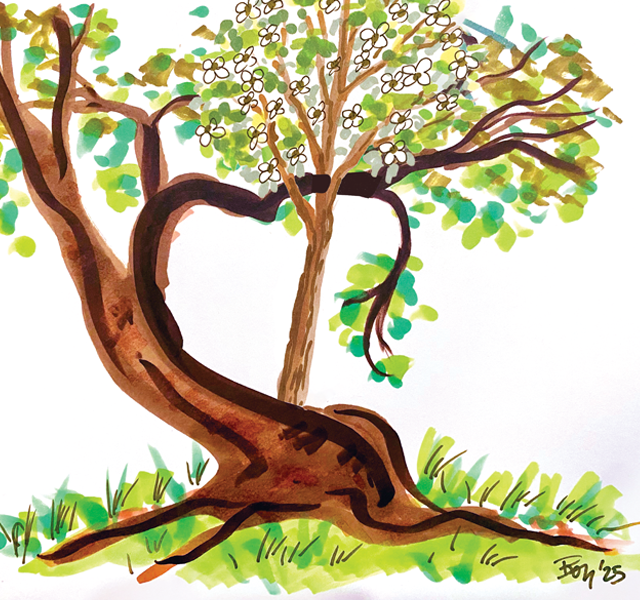The Occasions Lady and a Blooming Love Tree
The Occasions Lady and a Blooming Love Tree
I love the colors of Mother Nature’s palette as the trees along Crowley’s Ridge begin to bloom each spring.
The vibrant spring blooms and heart-shaped leaves of the Eastern Redbud tree, the most common and native redbud tree in Arkansas, is known as the harbinger of spring. Its delicate blossoms and buds are one of spring’s most dramatic displays. The flowering dogwood, known for its striking white or pink blooms that appear before the leaves emerge, is another favorite symbol of spring in Arkansas. My eyes are simply drawn to all the vibrant colors of the blooms this time of year.
So, it’s no surprise that on the first day of spring I found myself admiring the colorful blooms on my way to work. When I reached the bottom of the hill in our neighborhood, I noticed a blooming dogwood in front of me as I stopped at the intersection. It is a scrappy little tree, and without its white blooms, it would barely be noticeable. As I drove by, I noticed that the dogwood was growing through the trunk of a large oak – a reminder of one of my favorite trees in one of my favorite cities.
Every year, thousands of visitors to St. Augustine, Fla., visit the city’s iconic love tree. The large live oak tree is known for its distinctive feature of two trunks growing from one root, which have intertwined over time to form a single trunk with two branches at the top. The legend of the love tree dates back to 1866 when a man named William Bartram and his family moved to St. Augustine after being forced out of their home in Jacksonville during the Civil War.
An avid nature lover, it is said that Bartram soon became enchanted with this particular live oak tree that grew near his new home in St. Augustine. He observed that two separate trunks had grown together and formed a single trunk with two branches at the top, making it look like two people embracing each other in a loving embrace – hence the name “love tree.”
Bartram was apparently so taken with this beautiful symbol of love that he wrote about it in his book, “Bartram’s Travels” (1873). He described how he believed that the species of oak trees were chosen by God himself to represent divine love because of their intertwining trunks and branches. He also wrote that those who visited or passed by such trees could find solace and comfort in their beauty, much like he had done when he first encountered this majestic live oak in St. Augustine all those years ago.
The legend of the love tree has endured throughout the years and continues to capture people’s imaginations today – drawing tourists and locals alike to marvel at its beauty and pay homage to its storied past. It is now widely considered one of St. Augustine’s most beloved landmarks and remains an integral part of its history and culture nearly 160 years later.
Today, this distinctive tree is not only an iconic landmark in the historic city, but it also serves as a reminder of love, hope, solace and comfort – something we could all use more of these days. So, while you are out enjoying nature this spring, look for a love tree. It could be hiding in plain sight at the park, on your way to work or even in your own backyard.







